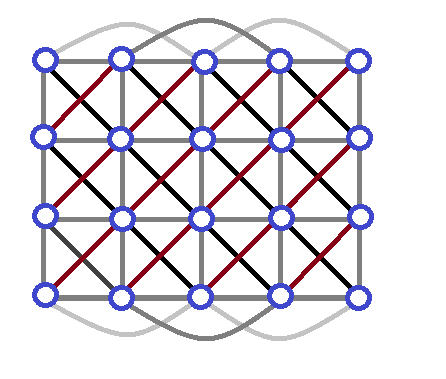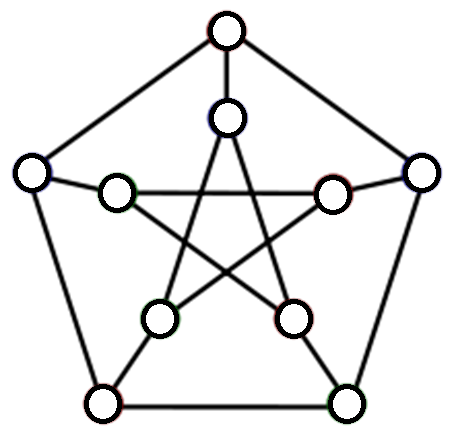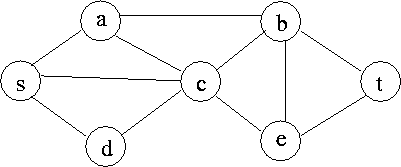
(a) [5] Color the vertices of this graph using the greedy coloring algorithm.
Process the vertices one row at a time going from top to bottom.
For a given row, process the vertices going from left to right.
For your color choices, use these colors in the order given:
red, blue, green, orange, yellow, purple.
If you do not have colored pens or markers, you can either use paint
or write r, b, g, o, y, p beside the node to indicate the color.
(b) [5] Use the colorful clique algorithm to determine if G has a clique of size 5 or not. The first step is the coloring you did for part (a). Explain each step that the algorithm takes from that point onwards.
0 0 0 0 1 2 1 2 0 2 0 3 2 2 2
(a) [5] Apply the doubling construction presented in class to construct a 10-clique in the Keller graph of dimension 4.
(b) [5] A maximal clique S in a graph has the property that for any vertex u of G that is not in S, S union {u} is not a clique. Is the clique you found for part (a) a maximal clique in the Keller graph of dimension 4? Justify your answer.

(a) [5] Analogous to what I did for the 120-cell, set up a linear programming problem for an upper bound for the maximum independent set order of a Petersen graph.
The variables you should use (in this order) are: R, P0, P1, P2, B0, B1, B2, B3. The equations should state that:
- The number of vertices is 10.
- The number of pentagons is the total number that the Petersen graph has. Hint: the graph is vertex-symmetric so each vertex is in the same number of pentagons.
- The number of reds matches up with the numbers you find in the pentagons.
- The number of reds matches up with the numbers you find as neighbours of the blue vertices.
(b) [5] An optimal solution to this problem has R=4, P0=0, P1= 0, P2=12, B0=0, B1=0, B2=6, B3=0. Show an independent set of the Petersen graph that realizes the values obtained for this optimal solution or explain why no such independent set can exist.

(a) [5] Compute the number of spanning trees on the fans which have
with 3, 4, 5, and 6 vertices using the algorithm for
2-trees presented in class.
(b) [5] Prove that an n-vertex fan has the same number of
spanning trees as an n-vertex ladder
using the series-parallel algorithm for
counting spanning trees presented in class.

(a) [10] Show the directed graph you would use if your aim
was to compute the minimum number of vertices in an s,t-vertex cut.
(b) [5] Apply the Edmonds-Karp flow algorithm to this network.
You do not have to show your work.
Indicate the final network flow.
(c) [5] Show the cut in the network obtained by letting P be the
set of vertices reachable from s in the final
auxillary graph for this question.
Which vertex cut from the original graph does this correspond to?